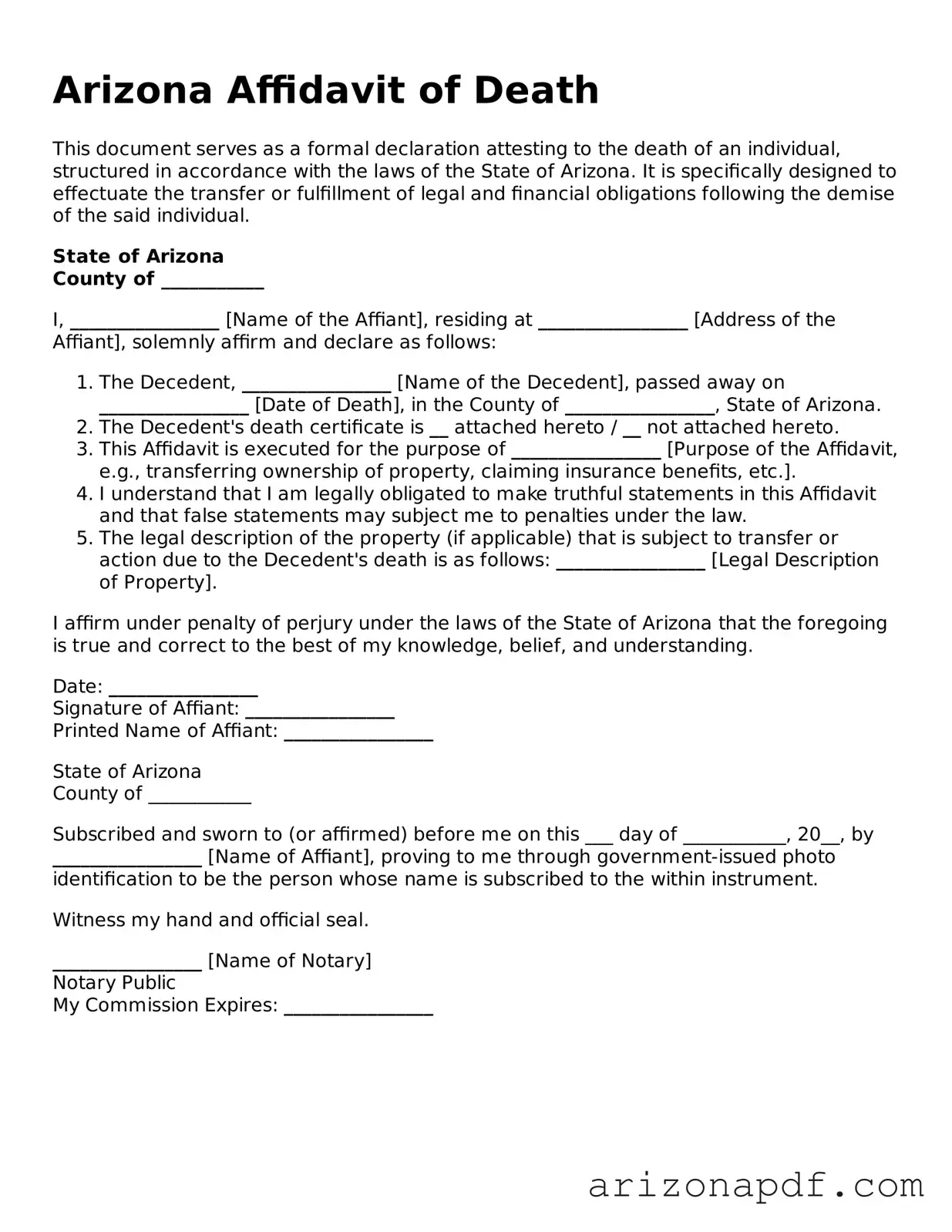The Arizona Affidavit of Death form shares similarities with the Death Certificate in that both serve as legal confirmation of an individual's death. While a Death Certificate is a formal government-issued document that officially records the date, location, and cause of death, the Affidavit of Death is a sworn statement used primarily for transferring assets or property of the deceased to their heirs or designated beneficiaries. Despite their different applications, both documents play crucial roles in settling the affairs of someone who has passed away.
Like the Arizona Affidavit of Death form, a Last Will and Testament is integral in managing the affairs of the deceased. The Last Will outlines the decedent's wishes regarding the distribution of their estate and the care of any dependents. In contrast, the Affidavit of Death is used to assert the fact of death in the legal process, often initiating the execution of the will. Both are essential in the probate process, with the Affidavit of Death sometimes acting as a supportive document to the Last Will and Testament.
The Transfer on Death Deed (TODD) bears resemblance to the Arizona Affidavit of Death form in that both involve the transfer of property upon the death of an individual. A TODD allows homeowners to name a beneficiary to whom the property will transfer when they die, bypassing the lengthy probate process. The Affidavit of Death, meanwhile, can be used to demonstrate the decedent's death, thereby facilitating the transfer process outlined in a TODD.
Joint Tenancy with Right of Survivorship Deeds are similar to the Arizona Affidavit of Death form in terms of property transfer upon an owner's death. These deeds allow property to pass automatically to the surviving owner(s) without the need for probate. The Affidavit of Death helps by providing legal proof of one owner’s demise, thereby enabling the property's transfer under the terms of the joint tenancy agreement.
Comparable to the Arizona Affidavit of Death form, a Life Insurance Claim form is used in the aftermath of an individual's passing to initiate a process, in this case, the payout of a life insurance policy. The Life Insurance Claim form requires proof of death and beneficiaries’ information to release funds. While serving different purposes—one for asset transfer and the other for claim processing—both documents rely on official acknowledgment of death as a starting point.
The Beneficiary Designation Form, often used in conjunction with retirement accounts or life insurance policies, shares a common purpose with the Arizona Affidavit of Death form, in that it designates who will receive assets upon the policyholder's or account holder's death. The Affidavit of Death, when presented, can activate these designations, ensuring the seamless transfer of assets to named beneficiaries according to the previously expressed wishes of the deceased.
A Durable Power of Attorney for Healthcare becomes important in the context of documents similar to the Arizona Affidavit of Death form. This legal document allows an individual to appoint another person to make healthcare decisions on their behalf if they become incapacitated. While not directly related to asset transfer or proving death, both documents address circumstances surrounding an individual’s end-of-life care and the subsequent administrative processes.
The Trust Certification is akin to the Arizona Affidavit of Death form in estate planning and execution purposes. This document certifies the existence of a trust, outlines its terms, and identifies the trustees. Upon the death of the trustor, the Affidavit of Death may be required to confirm the event, thereby enabling the trust's administration according to its terms. Both documents work hand-in-hand within the broader scope of managing and distributing the deceased's assets.
